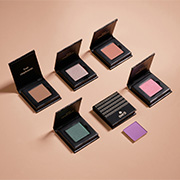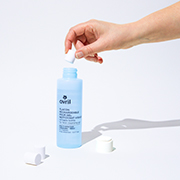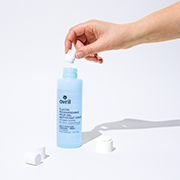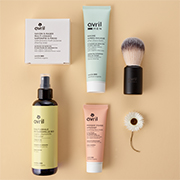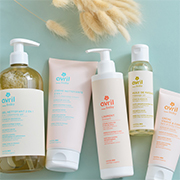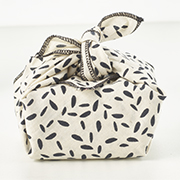How to choose and maintain your makeup brushes?
Between us, the secret to successful makeup rests on three things: having the right beauty products, the right tools (reference here, of course, to brushes), and that these are clean and well maintained.
The choice of brushes contributes to the correct application of your makeup, for a natural finish or at least aligned with your desires. As for their maintenance, well: it’s the same thing! Get your brushes, we'll explain all this to you.
Choosing the right makeup brushes
Powder brush, blush brush, concealer brush, sculptor, blender, or even Kabuki brush, formerly used by Geishas in Japan: entering the world of the brush can be disorienting.
So if we had to give you one piece of advice to get back on track, it would be to choose a brush based on the desired result. To do this, know that the denser the brush, the more material it picks up and applies (and the more easily it blends). On the other hand, the more diffuse and flexible the brush is, the less it picks up, applies and blends the material.
Knowing this, know that the choice between these two types of brushes will be made according to the desired result (as we said) since:
● a diffuse and flexible brush allows natural makeup and a light result,
● while a dense brush offers a more covering result
NB: what is a dense brush? The Kabuki brush for example vs. the powder brush, more flexible and diffuse.
Synthetic hair or natural hair?
Natural bristle paintbrushes are usually made from squirrel, pony, or goat fur. At Avril, all our brushes are vegan, cruelty-free, made from synthetic bristles.
Please note: all our brushes are made in France by hand, from ferrule fitting (putting the bristles in the aluminum ferrule) to fitting, with a wooden handle which is French. You will find all the details on the product sheet for each of our brushes.
What about the sponge?
L’éponge quant à elle apporte de la précision. D’abord, sachez qu’elle doit être humidifiée pour à la fois, mieux absorber la matière puis pour permettre d’en appliquer la quantité exacte. Elle offre un fini naturel, sans trace, mais apporte tout de même de la couvrance.
Each make-up has its own brush
Concretely,
● to apply foundation, we favor a dense and compact brush such as the Kabuki brush
● the concealer is applied with a finger or a concealer brush
● to apply foundation powder, use a powder brush or a Kabuki brush for medium coverage
● to apply blush, use a blush brush or an angled brush (because its shape matches that of the cheekbones)
● for eye makeup, we favor the brush adapted to the application or beauty product: the eye liner brush, the blending brush, the eyelid applicator or the shadower
How to maintain your makeup brushes?
Depuis son rangement jusqu’à son utilisation, nettoyage et séchage : un pinceau bien entretenu, qui plus est de qualité, vous suivra longtemps. En plus, un pinceau à maquillage peut être un véritable nid à bactéries s’il n’est pas nettoyé, et son efficacité peut également pâtir d’un non entretien. Alors, n’oubliez pas de prendre soin de vos pinceaux. Comment ?
Daily
Nettoyez-le ou débarrassez-le des poussières et impuretés en balayant les fibres avec la paume de la main. Au moment de son utilisation, faites attention à ne pas trop appuyer sur la tête (le bout du pinceau), et évitez d’appliquer trop de matière. Allez-y doucement, et petit à petit.
To keep them for a long time
To keep it for a long time, in addition to this daily care, you must clean it regularly. Clean it with warm water and/or brush cleaner. Using a mild soap (natural soap or shampoo, ideally certified organic) will allow you to clean thoroughly. Apply the soap in circular motions then rinse thoroughly.
Please note: it is recommended to clean your eye brushes, ideally at least once a week (to avoid mixing colors in particular). That said, you can give your eye brushes and complexion brushes a good cleaning once a week.
It is then recommended to dry it by placing it on a clean cloth or absorbent paper then letting it dry naturally horizontally, so that it keeps its initial shape and so as not to damage it.
Where to store your makeup brushes?
Between the edge of the sink and a brush pot in your room, we of course recommend the dedicated pot, in a room that is not too humid, head upwards (i.e. hairs upwards. And if it is a dual-ended brush, such as our Brow and Spoolie Duo Brush, place it flat on a clean, dry surface.
Your brush will thank you, and so will your skin at the same time.

